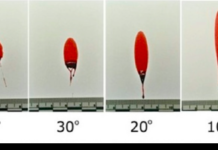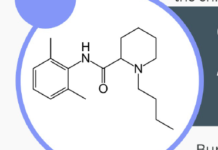Lately, we have seen increasing interest in a new area of materials science: epidermal electronics. Have you ever imagined a polymer that could react like your own skin does to being cut, or that could conduct electricity? 
Thanks to electrical engineering major Benjamin C-K. Tee, assistant professor of electrical and computer engineering, Chao Wang, chemical engineering student Ranulfo Allen and Chemical engineer, and Professor Zhenan Bao, all at Stanford University in California, this dream is now within our reach.
This team designed a polymer with a unique amalgam of properties and published an article in Nature Nanotechnology on November 11, 2012. These properties allow the material to have the potential to become wearable electronics, prosthetics, and maintenance-free wiring
In the United States, around 1.7 million people have lost extremities and may be dealing with the use of a prosthetic, according to the Amputee Coalition. The prosthetics are generally intended to give the user a higher functioning limb and are also valuable for aesthetic reasons. This advance in materials means that soon, many amputees could have an even higher functioning prosthetic.
In addition to prosthetics, this material could be used to create wearable electronics, such as a flexible heart rate monitor, say the researchers. This means that it would be just that much easier to create electronics for monitoring the body, because they could be worn as just another article of clothing.
The polymer can also "self-heal", which has been seen before in other materials, say the researchers. However, this material can both heal and conduct electricity. The Stanford team could combine these properties by adding micro-structured nickel particles to allow for conduction.
As one of the researchers,Tee, stated, "To interface this kind of material with the digital world, ideally you want it to be conductive."
Because the material can also sense pressure, it can improve feeling in the prosthetic. Additionally, because the material changes electrical resistance as it is flexed, it can be used in a joint to sense the degree of bend, say the researchers.
This polymer can heal almost magically after a cut. However, this is easily explained by looking at the molecular level of the substance. These long chains of molecules are surrounded by hydrogen atoms.The molecules are attracted to each other through a fairly strong intermolecular hydrogen bond. Although the polymer chains are not bonded together, they align and are attracted to each other because of the polarity of the hydrogen atoms. This gives much more structure to the material and allows the material to reseal, says the researchers. Because of this, the material is not hard to cut and separate, but when pressed back together gently, the hydrogen bonds reengage, causing the substance to realign and seal back together without evidence of ever being cut.
However, for the substance to be fully restored to mechanical strength, the substance needs to be heated to 50° C. Indeed, the researchers at Stanford say that they found little to no decrease in mechanical strength after heating. In fact, the mechanical strength at the point of fracture appeared to increase after heating and resealing!
Previous self-healing polymers had to be heated to high temperatures, making them not very useful for material applications. This new material is heated to a much lower temperature, making it significantly easier to use in a practical setting, say the researchers.
This material senses flex and pressure through changes in the electrical resistance of the material. Due to the spacing of the nickel particles in the polymer, when the material is flexed it pushes the nickel particles closer together on the inside curve of the bend. The closer together the particles are, the less resistant the material becomes.This means that this material can sense pressure by recording the differences in resistance as pressure is applied.
The next step is to find a way to make the material realign without needing heat, say the researchers. If this advancement could be accomplished, the material could use this material for wiring in places that were hard to get to, so that if they were damaged they could fix themselves.
Additionally, Stanford’s news site points out that if the material could be made to be transparent, it would be ideal for touch screens and electronic applications. Robin Austin
Robin Austin

This work is licensed under a Creative Commons Attribution-NonCommercial-NoDerivs 3.0 Unported License














i think that this a very good for people how have prosthetic limbs
I never knew that a polymer that could react like your own skin does to being cut.:good